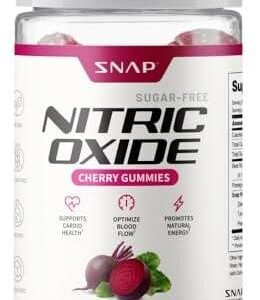In the realm of sports nutrition, few supplements have garnered as much attention and research as whey protein. Recognized for its high-quality protein content and rich amino acid profile, whey protein stands as a pivotal player in the dialog surrounding muscle growth and recovery. This article seeks to dissect the intricate mechanisms through which whey protein influences muscle hypertrophy, enhances recovery post-exercise, and ultimately supports athletic performance. As fitness enthusiasts and athletes constantly seek to optimize their training outcomes, understanding the biochemical pathways activated by whey protein is crucial. By delving into the scientific underpinnings of this supplement, we aim to provide a comprehensive analysis of its benefits, potential drawbacks, and best practices for incorporation into a balanced diet. Through a methodical examination of peer-reviewed studies and expert opinions, we endeavor to elucidate the essential role whey protein plays in the pursuit of physical excellence.
Table of Contents
- The Biochemical Mechanisms of Whey Protein in Muscle Hypertrophy
- Comparative Analysis of Whey Protein Isolate and Concentrate for Optimal Recovery
- Timing and Dosage: Strategic Use of Whey Protein to Enhance Athletic Performance
- Integrating Whey Protein into a Balanced Diet for Sustainable Muscle Growth
- In Retrospect
The Biochemical Mechanisms of Whey Protein in Muscle Hypertrophy
The biochemical influence of whey protein on muscle hypertrophy is profound, primarily attributed to its rich composition of essential amino acids and bioactive peptides. Upon ingestion, whey protein is rapidly digested and absorbed, resulting in a swift increase in amino acid levels in the bloodstream. Leucine, a branched-chain amino acid, stands out for its critical role in stimulating the mTOR pathway, which is a central regulator of cell growth and muscle protein synthesis. This signaling cascade leads to the activation of several downstream effectors that contribute to muscle hypertrophy, enhancing muscle fiber repair and growth post-exercise. The rapid availability of amino acids also helps mitigate muscle protein breakdown, creating a more favorable anabolic environment for muscle recovery and growth.
Moreover, whey protein’s unique peptide profile can influence physiological processes beyond mere amino acid supplementation. Certain peptides exhibit hormonal activities, such as the modulation of insulin levels, which can further facilitate nutrient delivery to muscle tissues during the post-exercise recovery phase. Additionally, whey protein has been shown to reduce levels of myostatin, a negative regulator of muscle growth, thus promoting larger muscle mass over time. The following table summarizes the core biochemical mechanisms through which whey protein aids in muscle hypertrophy:
| Mechanism | Description |
|---|---|
| Increase in Amino Acid Availability | Rapid absorption and elevated serum amino acid levels post-ingestion. |
| Activation of mTOR Pathway | Stimulates muscle protein synthesis and growth. |
| Reduction of Muscle Protein Breakdown | Protects against catabolism during recovery. |
| Peptide Bioactivity | Influences insulin levels and enhances nutrient uptake. |
| Myostatin Inhibition | Promotes muscle growth by reducing the negative influences on muscle mass. |
Comparative Analysis of Whey Protein Isolate and Concentrate for Optimal Recovery
When deciding between whey protein isolate and concentrate, several vital factors emerge that can influence muscle recovery and growth. Whey protein isolate is renowned for its higher protein content, typically around 90% or greater, making it an excellent option for those seeking to maximize their protein intake without excessive calories or fats. Additionally, the lower lactose levels in isolate cater to lactose-intolerant individuals, allowing them to benefit from the recovery advantages of whey protein without digestive discomfort. On the other hand, whey protein concentrate, which contains approximately 70-80% protein, is often favored for its more balanced nutritional profile, including slightly higher levels of carbohydrates and fats that can contribute to overall caloric needs during recovery.
To better understand the differences, consider the following factors in a side-by-side comparison:
| Factor | Whey Protein Isolate | Whey Protein Concentrate |
|---|---|---|
| Protein Content | 90% or higher | 70-80% |
| Lactose Content | Low | Moderate |
| Calories | Lower | Higher |
| Recovery Speed | Fast | Moderate |
In practical application, the choice between isolate and concentrate may also hinge on personal goals and dietary needs. For athletes prioritizing rapid absorption post-workout, whey protein isolate is advantageous due to its purity and speed of digestion. Conversely, for those who may be looking for a more calorie-dense option to support overall energy needs, whey protein concentrate can serve as a reliable source of not only protein but also essential fats and carbs that contribute to a more comprehensive recovery strategy. Understanding these differences allows individuals to tailor their protein supplementation to align with their specific fitness objectives and recovery protocols.
Timing and Dosage: Strategic Use of Whey Protein to Enhance Athletic Performance
The strategic timing of whey protein intake can significantly influence muscle recovery and growth. Research indicates that both pre- and post-workout supplementation can facilitate faster recovery and muscle protein synthesis. A well-timed dose of whey protein can enhance the body’s anabolic response to exercise, effectively leveraging the “anabolic window” that follows intense physical activity. Ideally, athletes should consider the following guidelines for optimal protein consumption:
- Pre-Workout: Aim for 20-30 grams of whey protein about 30-60 minutes before training to prime muscles for recovery.
- Post-Workout: Consume an additional 20-30 grams immediately after exercise to maximize muscle repair and growth.
- Throughout the Day: To maintain a consistent protein intake, incorporate whey protein into meals or snacks, especially for those with heightened training demands.
For athletes aiming to enhance performance, it’s essential to consider the dosage of whey protein relative to individual body weight and training intensity. A commonly recommended intake is approximately 1.2 to 2.2 grams of protein per kilogram of body weight per day, depending on activity level. A simple breakdown is depicted in the table below:
| Activity Level | Protein Intake (g/kg/day) | Daily Whey Protein Requirements (for 70 kg individual) |
|---|---|---|
| Sedentary | 0.8 | 56 g |
| Active | 1.2 – 1.6 | 84 – 112 g |
| Athlete | 1.6 – 2.2 | 112 – 154 g |
Integrating Whey Protein into a Balanced Diet for Sustainable Muscle Growth
Incorporating whey protein into a well-structured diet is a pivotal strategy for those aiming to enhance muscle growth sustainably. This complete protein source, rich in essential amino acids, supports muscle repair and development when consumed strategically. To maximize its benefits, consider integrating whey protein during key times, such as:
- Post-Workout: The optimal time to consume whey protein is immediately after a workout, where it can promote quicker recovery by supplying muscles with the necessary amino acids.
- Meal Replacement: Whey can serve as an efficient substitute for less balanced meals, ensuring that protein intake remains adequate throughout the day.
- Snacking: A protein shake can be a convenient snack option, helping to curb hunger while supporting muscle maintenance between meals.
As part of a balanced macronutrient profile, it’s essential to pair whey protein with other dietary components to support muscle growth effectively. A well-balanced diet should include a variety of nutrients, highlighting the importance of:
| Macronutrient | Role in Muscle Growth |
|---|---|
| Carbohydrates | Provide energy for workouts, aiding in performance and endurance. |
| Fats | Support hormone production and energy storage, crucial for overall health. |
| Fiber | Maintains digestive health and promotes satiety, preventing overeating. |
By understanding the synergistic role of whey protein in conjunction with other macronutrients, individuals can create a comprehensive dietary plan that champions sustained muscle development and enhances overall fitness performance.
In Retrospect
the importance of whey protein in muscle growth and recovery cannot be overstated. As a high-quality protein source rich in essential amino acids, particularly leucine, whey protein plays a pivotal role in stimulating muscle protein synthesis and facilitating recovery post-exercise. Its rapid absorption and bioavailability make it an ideal supplement for athletes and fitness enthusiasts aiming to optimize their performance.
Moreover, the scientific evidence supporting whey protein’s benefits extends beyond mere muscle building; it also encompasses improvements in overall body composition, enhanced immune function, and reduced exercise-induced muscle damage. However, it is essential to integrate whey protein into a well-rounded diet and training regimen, recognizing that no single supplement can replace the foundational role of proper nutrition and individualized training programs.
As research continues to evolve, it is crucial for individuals to stay informed about the latest findings and tailor their protein intake to their specific needs and goals. In navigating the complex landscape of sports nutrition, whey protein remains a key player, underscoring the necessity of informed dietary choices in the pursuit of optimal physical performance and recovery.





